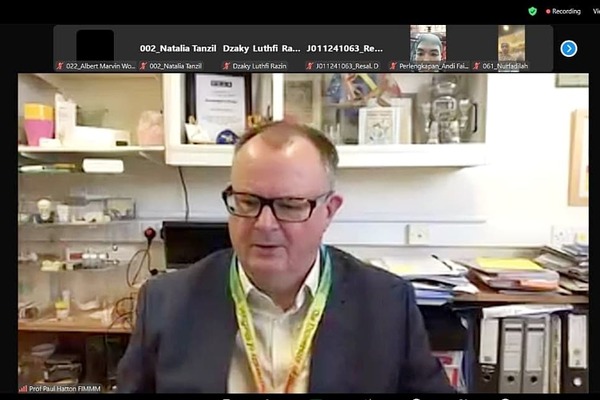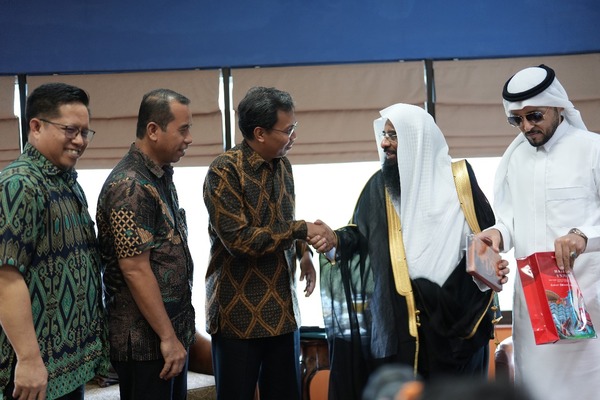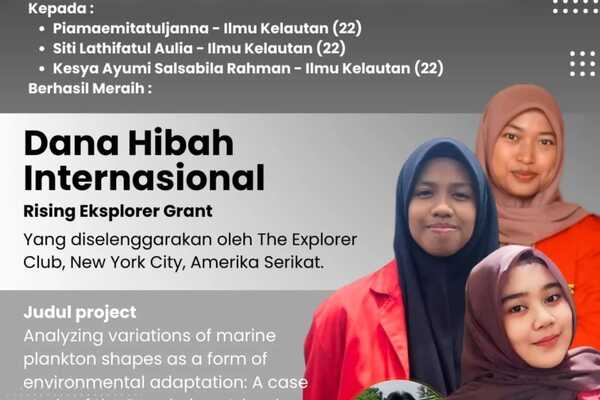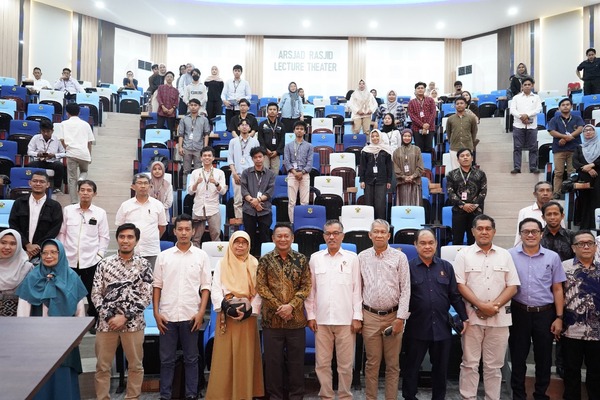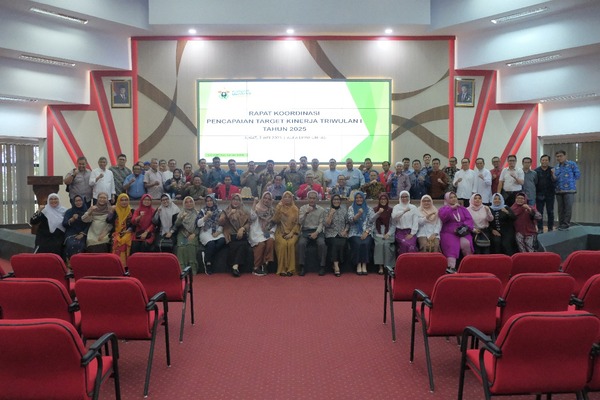Universitas Hasanuddin (Unhas), along with the Department of Biology, Faculty of Mathematics and Natural Sciences (FMIPA), held an international conference entitled “The 1st International Conference on Biology (ICoB)”. This conference carried the theme “Biodiversity and Biotechnology for Sustainable Development Goals”.
The conference took place at 8.30 Central Indonesia Time, conducted online through the Zoom meeting application, on Saturday (11/12).
It presented keynote speakers, namely Prof. Dr. Mohd Ilham bin Adenan (Universitas Teknologi Mara, Malaysia). Adapun narasumber lainnya yakni Dr. Ravenska Wagey (STEMCELL Technologies Inc, Canada), Dr. rer. nat. Dominik Kneer (ZMT Bremen – Germany), Prof. Shihui Yang (Hubei University, China) dan Prof. Dr. Budi Setiadi Daryono, M.Agr., SC (Universitas Gadjah Mada, Indonesia).
In the commencement, the Chairman of the Committee, Dr. Magdalena Litaay, M.Sc., explained that ICoB is the first conference organized by the Department of Biology. ICoB presents resource persons from various countries who will provide an overview of biodiversity and biotechnology advantageous for sustainable development. The participants came from different educational institutions and the public.
Prof. Dr. Dwia Aries Tina Pulubuhu, MA, Rector of Universitas Hasanuddin, was present to officially open the conference. In her speech, she expressed her deep appreciation for carrying out the first ICoB presenting prominent speakers from various disciplines. Moreover, she considered ICoB an excellent forum for researchers to share experiences and exchange biological and applied sciences ideas.
“The issues discussed are very critical, especially in responding to the Covid-19 pandemic. Research is strongly required to capture the benefits of biodiversity and help the community improve quality. I believe there will be captivating ideas to be further developed. This also sheds light for researchers to collaborate in their own respective fields,” Prof. Dwia explained.
As the keynote speaker, Prof. Dr. Mohd Ilham bin Adenan explained about “Acetylcholinesterase, Oxidative, Stress and Inflammation Inhibitory Potentials of Centella Asiatica Extract on Cell Lines and Brain Tissues Homogenates of Sprague Dawley Rats”.
In general, he explained the research carried out on the Centella Asiatica plant, especially in its use against Alzheimer’s Disease (AD).
Centella Asiatica (CA) is a psychoactive medicinal plant from the Apiaceae family (formerly well-known as Umbelliferae) widely used because of its ingredients. For example, CA bioactive compounds are used as powerful antioxidants, anti-inflammatory and anti-ageing agents in the cosmetic industry.
Research conducted by Prof. Ilham focused on probing the ability of RECA to inhibit AChE, oxidative stress, and inflammatory activity through in vitro studies. Further, the research was focused on investigating the inhibitory selectivity of RECA on AChE isoforms and determining the RECA fraction that is most active in inhibiting AChE activity and its ability to suppress oxidative stress and inflammatory activity through in vitro studies.
Dr. Ravenska Wagey delivered the other presentation on “Applications of Mesenchymal and Endothelial Cells in Regenerative Medicine”. He generally explained Mesenchymal stem cells (MSC) that commonly benefitted as therapeutic cells.
Stem cells are all types of cells that particular function to produce two main properties, i.e. the ability to go through many cycles of growth and proliferation while maintaining an undifferentiated state and the capacity to differentiate into specialized cell types.
Meanwhile, regenerative medicine is a branch of medicine that develops methods to regrow, repair or replace damaged cells, organs or tissues, covering the manufacture and use of therapeutic stem cells, tissue engineering, and artificial organ production.
“The main focus is MSC which is multipotent. The ability of MSCs to differentiate into various cell types opens up opportunities for their use as therapeutic cells. MSCs can be obtained from several sources such as Warthon’s gel, fatty tissue, pulp, and bone marrow. In animals, stem cell utilization models can be used to develop biological sciences, regenerative therapy models, and drug toxicity screening. Regarding this demand, a certain amount of MSC is surely needed,” explained Dr. Ravenska.
The presentation was then proceeded by a parallel session, where the participants presented the papers that had been collected. According to the schedule, ICoB will end at 18.00 WITA.
Marningsih Sadik, S.S. and Kumara Tungga Dewa, S.S.
Editor : Ishaq Rahman, AMIPR

